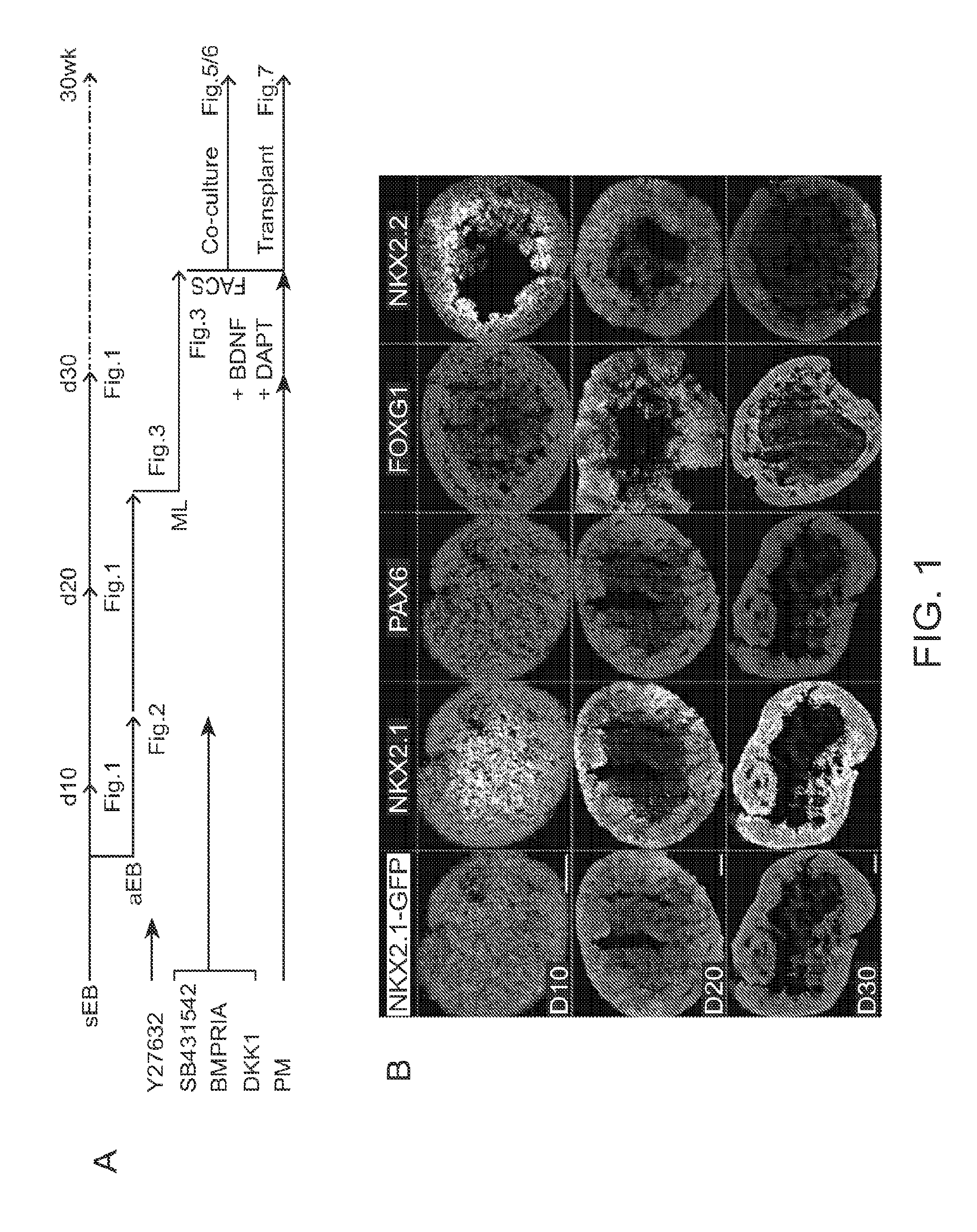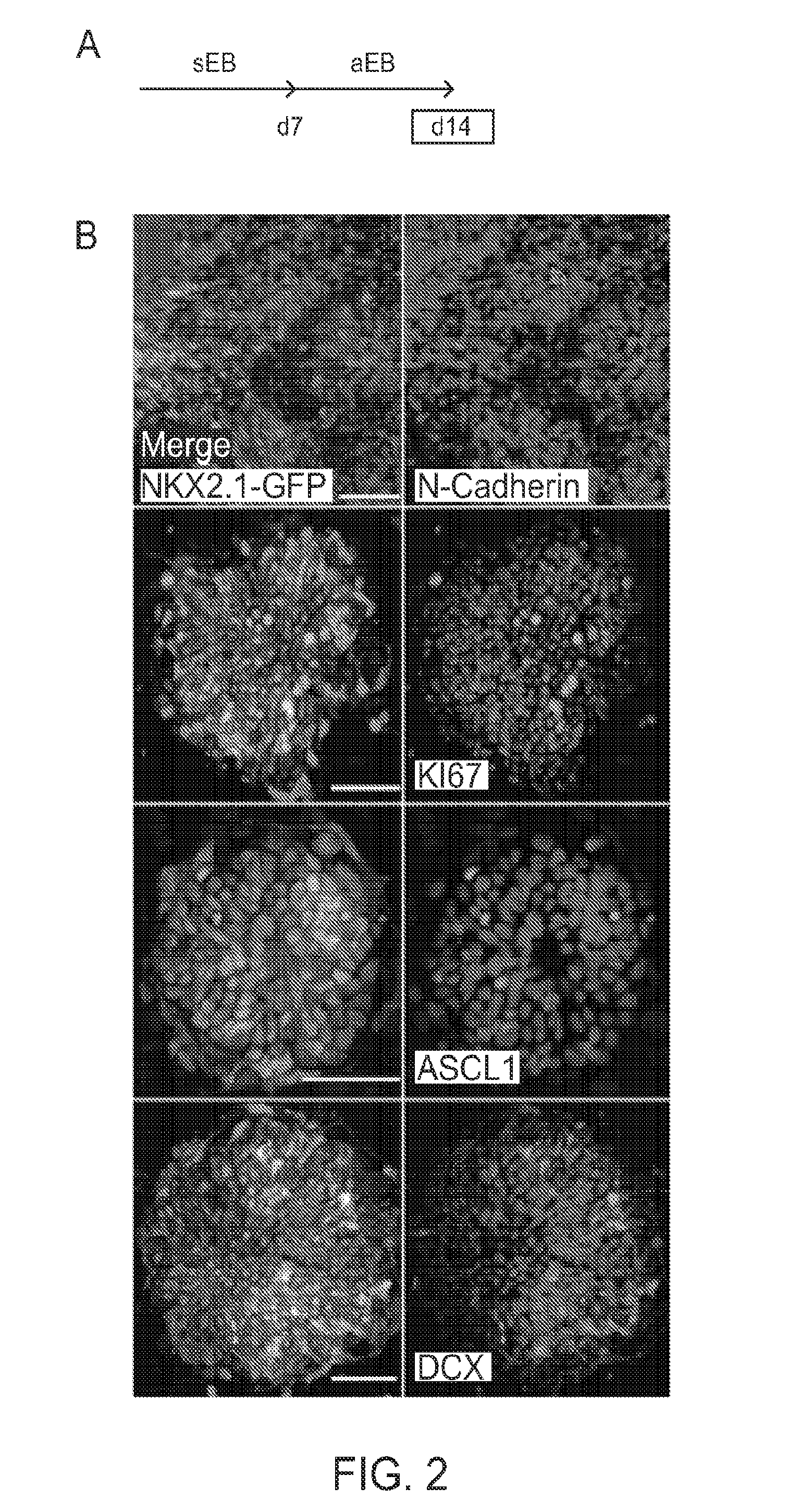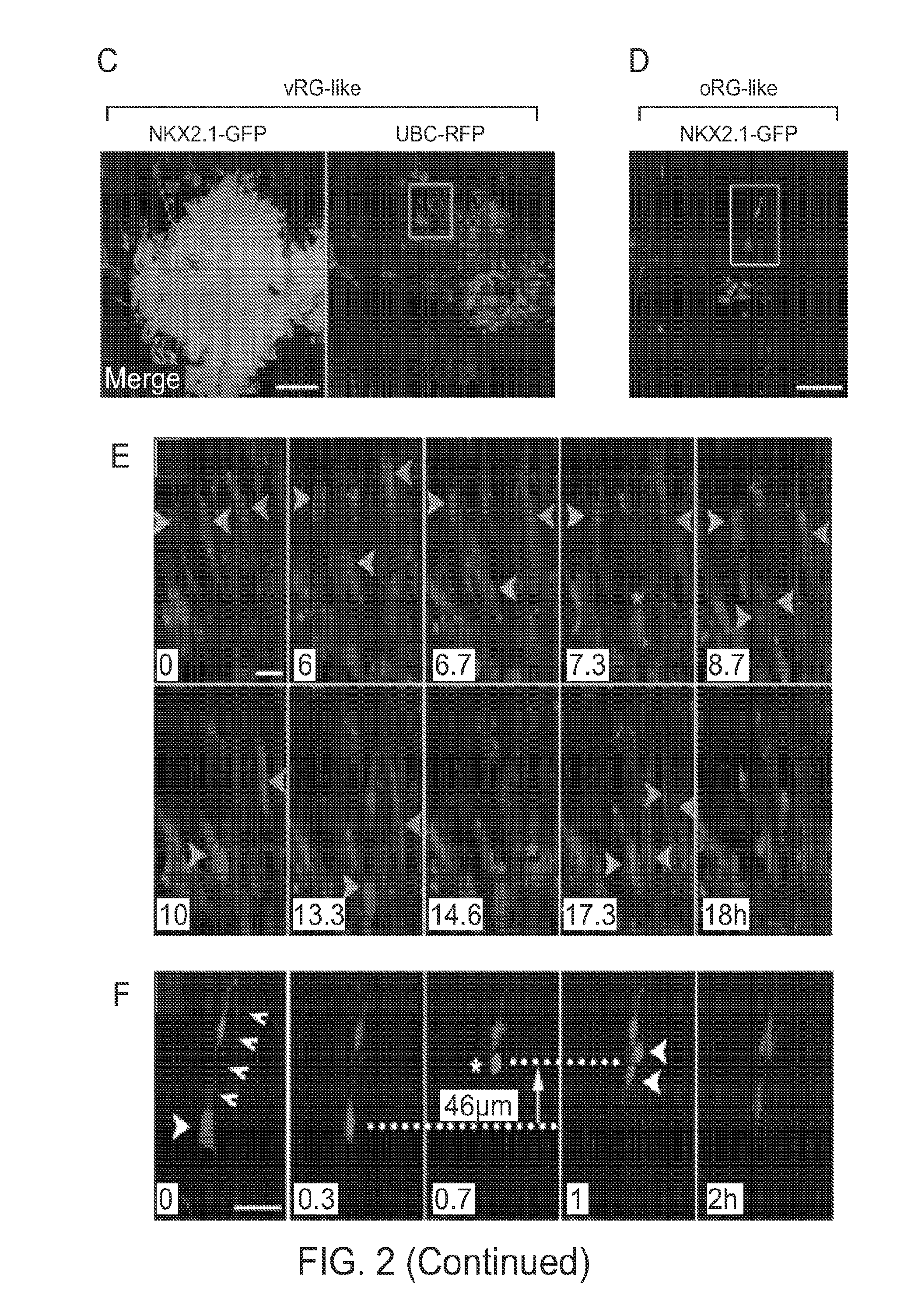In Vitro Production of Medial Ganglionic Eminence Precursor Cells
a technology of precursor cells and medial ganglions, which is applied in the field of in vitro production of medial ganglionic eminence precursor cells, can solve the problems of inability to obtain the viability of the cell characteristics of mge cells by vitro, and achieve the effect of efficient production
- Summary
- Abstract
- Description
- Claims
- Application Information
AI Technical Summary
Benefits of technology
Problems solved by technology
Method used
Image
Examples
example 1
hESC-Derived Telencephalic MGE-Like Identity
[0261]To facilitate the identification of hPSC-derived NKX2.1+MGE precursor cells, we used the HES-3 hESC line (HES-3 NKX2.1GFP / w) with a GFP knock-in construct inserted into the second exon of NKX2.1 (Goulburn, A. L., et al. (2011). Stem Cells 29, 462-473). NKX2.1 expression marks ventral forebrain-specific identity in the developing nervous system, including telencephalic MGE, pre-optic area (POA), septum, and diencephalic hypothalamus. In combination with dual-SMAD (SB431542 and BMPRIA-Fc) and WNT inhibition (DKK1), we found that early SHH pathway activation (purmorphamine) and B-27 supplementation enabled highly efficient and reproducible ventral forebrain-like differentiation from hESCs. The average NKX2.1-GFP+ efficiency on day 20-30 post-differentiation was 74.9±2.1% (n=25 independent differentiation experiments). We also found that additional hPSC lines, research grade cGMP-matched ESI-17, 35, 51, and 53 (Biotime), and H9 (WiCell),...
example 2
hESC-Derived MGE Precursor Cells Exhibited VZ and SVZ Radial Glial-Like Stem Cell Behaviors
[0267]A defining feature of embryonic neural development is the acquisition of apico-basal polarity and development of radial glial neural stem cells (Kriegstein and Gotz, 2003). There is evidence that neuroepithelial progenitors in hESC-derived neural rosettes represent apico-basal-like polarity (Elkabetz, Y., et al. (2008). Genes Dev 22, 152-165). When sEBs were plated en-bloc on day 4-7, the adherent EBs (aEBs) flattened and revealed the organization of NKX2.1-GFP+ cells in rosette structures (FIGS. 2A and 2B). N-cadherin expression was restricted to the rosette luminal surface, confirming polarity, and was consistent with localization to radial glial end feet on the apical ventricular surface in the embryonic brain. K167 was expressed in many cells, particularly in those near the rosette lumen. In contrast, neuronal markers, ASCL1 and DCX, were detected away from the lumen (FIG. 2B).
[0268]...
example 3
hESC-Derived MGE-Like Progenitors Generated GABAergic Interneurons
[0271]We further explored the identity and fate of the hESC-derived cultures. Immunostaining analysis was conducted on d25 aEBs (FIGS. 3A and 3B). Day 25 aEBs were also dissociated, cultured as a monolayer (ML), and immunostaining analysis was performed and quantified on day 35 (FIGS. 3C-3E). At both day 25 and day 35 stages, NKX2.1-GFP expression was specific to cells expressing endogenous NKX2.1 protein (91.3+1.7%) (FIG. 3E). On day 25, FOXG1 and OLIG were expressed in most of the NKX2.1-GFP+ cells, providing further evidence for ventral telencephalic-like identity (FIG. 3B). By day 35, most GFP+ cells continued to express FOXG1 (81.5±3.6%) but had downregulated OLIG2 (6.8±3%). The majority of GFP+ cells also expressed ASCL1 (79.9±6.5%) and DLX2 (79.8±3.7%) by day 35. Since OLIG2 marks GE progenitors while DLX2 marks GABAergic neuronal lineages, these results suggested that day 25 hESC-derived MGE-like progenitors (...
PUM
 Login to View More
Login to View More Abstract
Description
Claims
Application Information
 Login to View More
Login to View More - R&D
- Intellectual Property
- Life Sciences
- Materials
- Tech Scout
- Unparalleled Data Quality
- Higher Quality Content
- 60% Fewer Hallucinations
Browse by: Latest US Patents, China's latest patents, Technical Efficacy Thesaurus, Application Domain, Technology Topic, Popular Technical Reports.
© 2025 PatSnap. All rights reserved.Legal|Privacy policy|Modern Slavery Act Transparency Statement|Sitemap|About US| Contact US: help@patsnap.com



